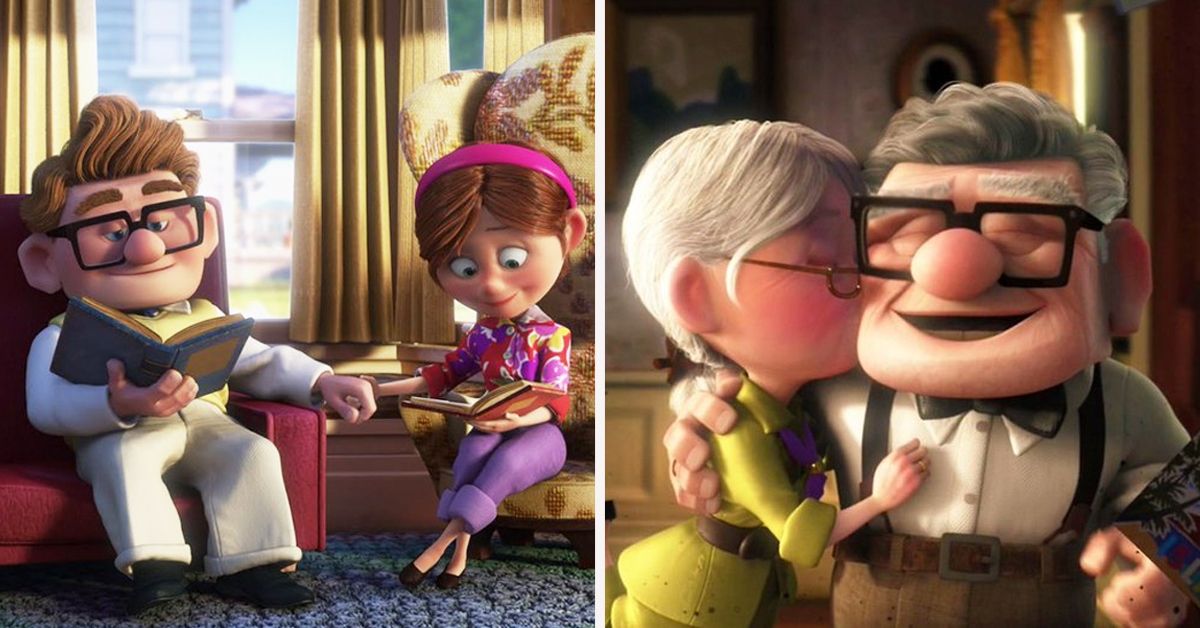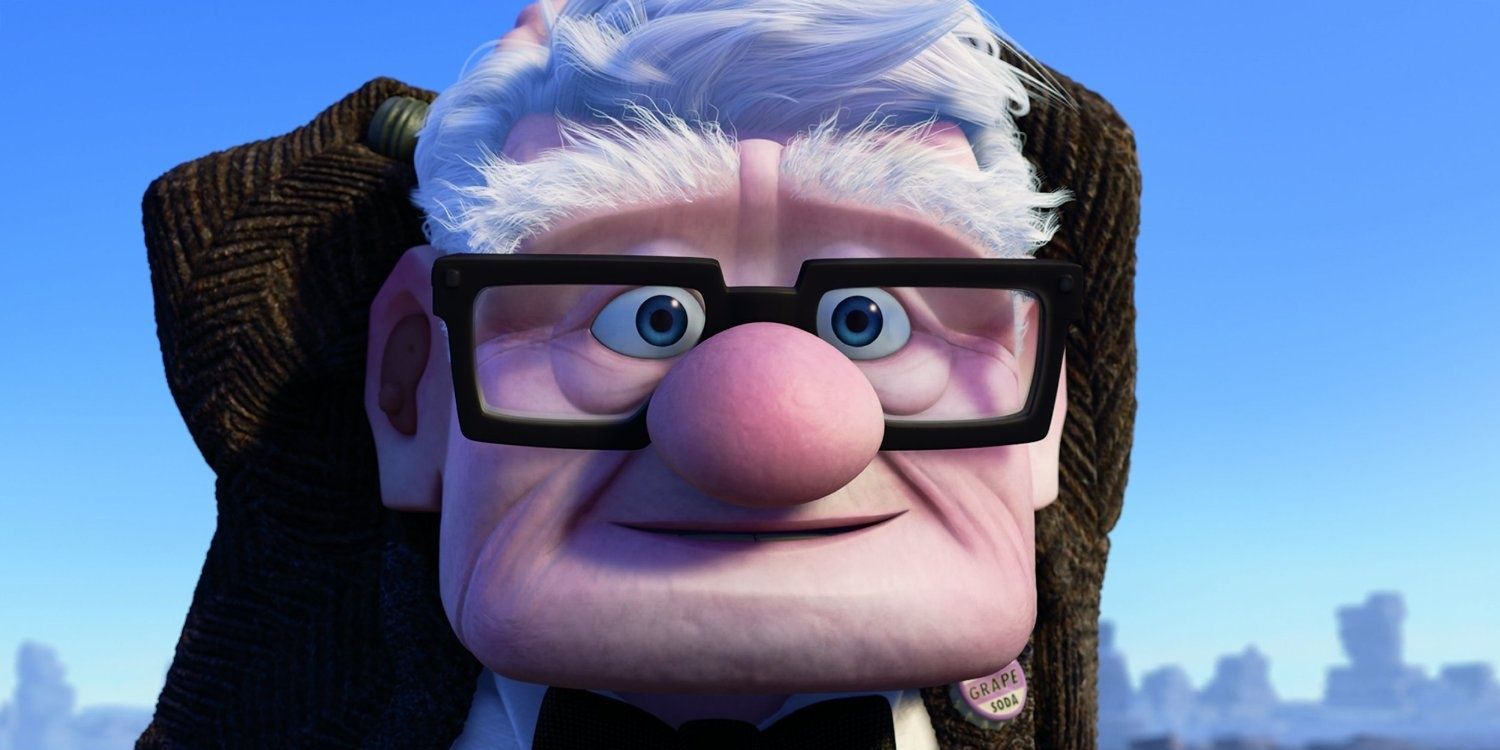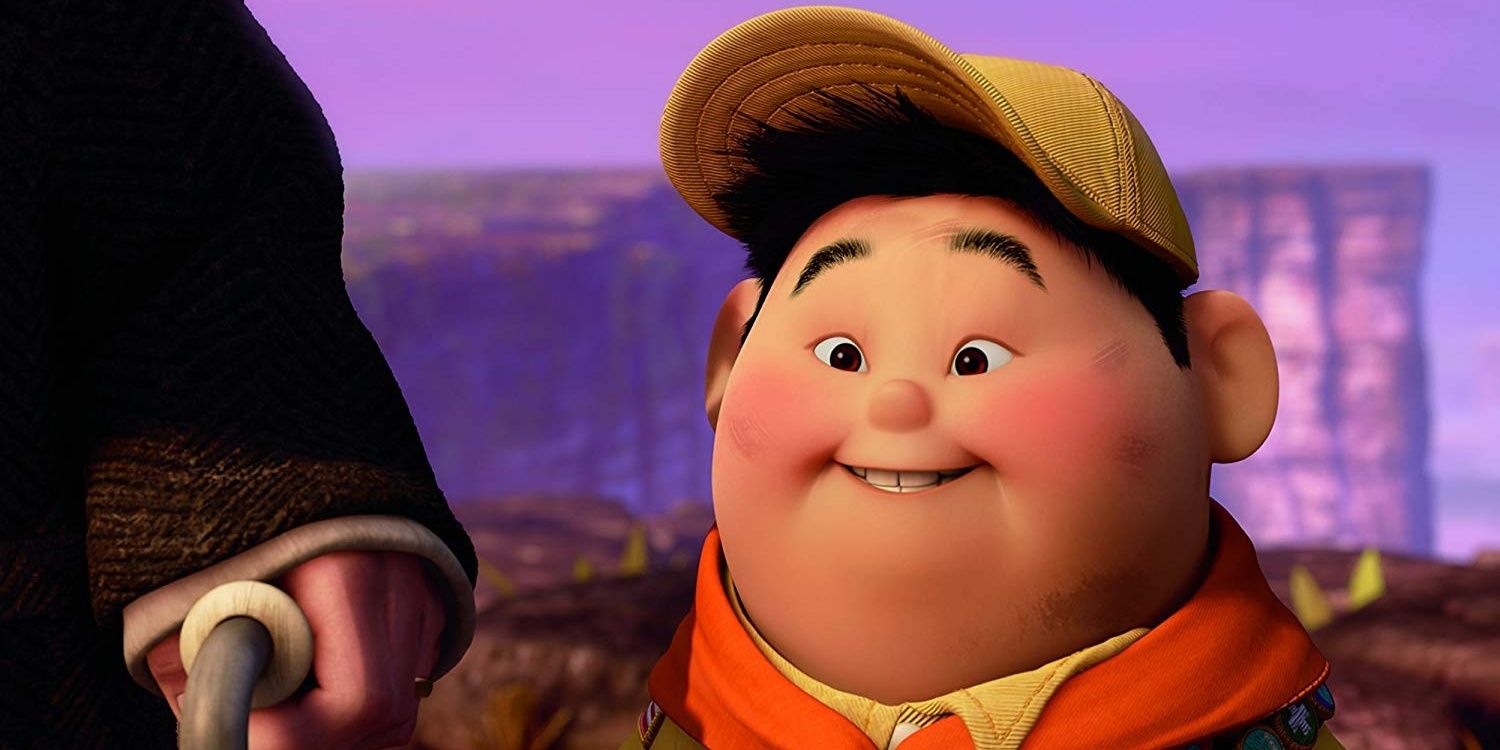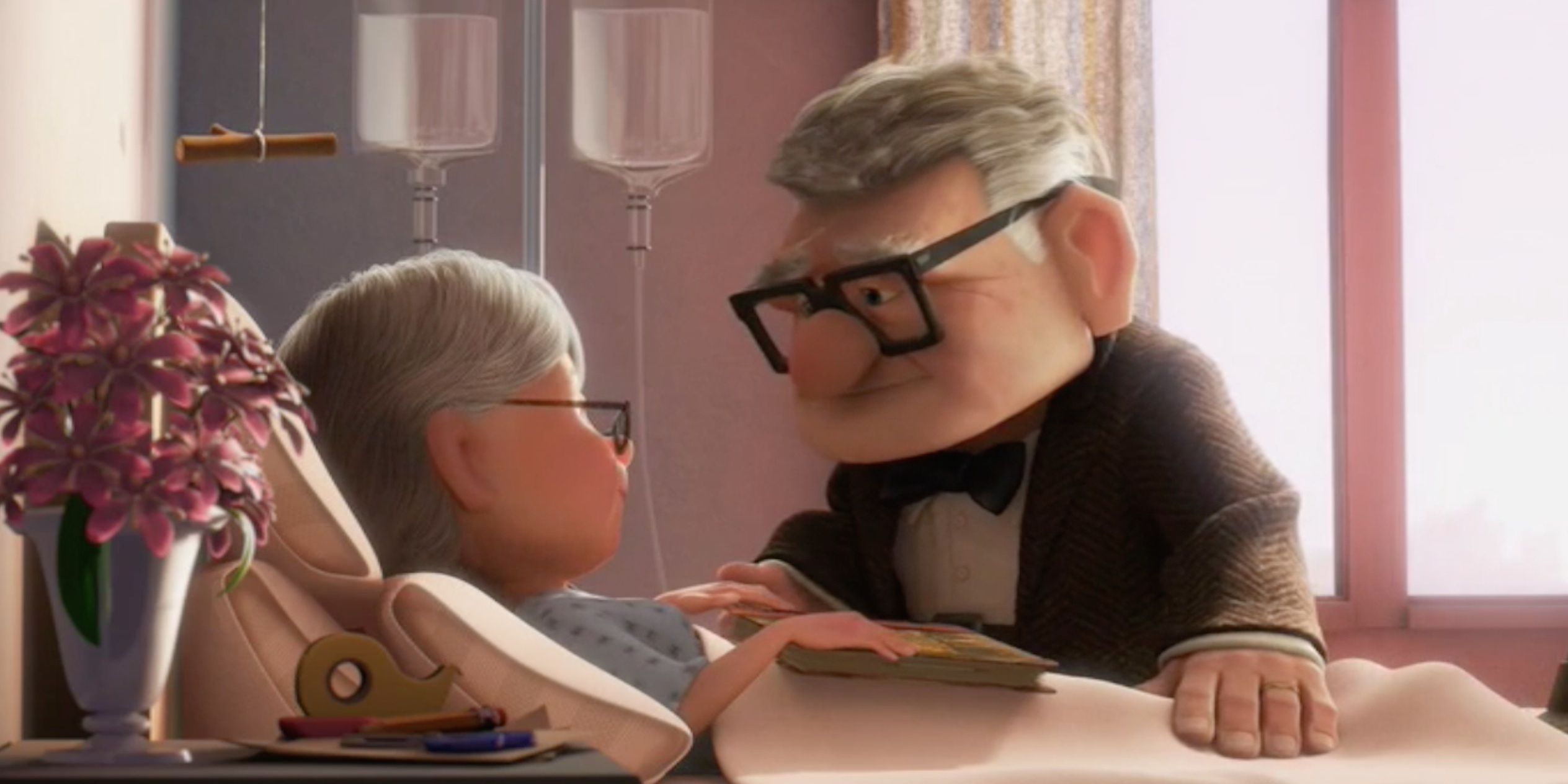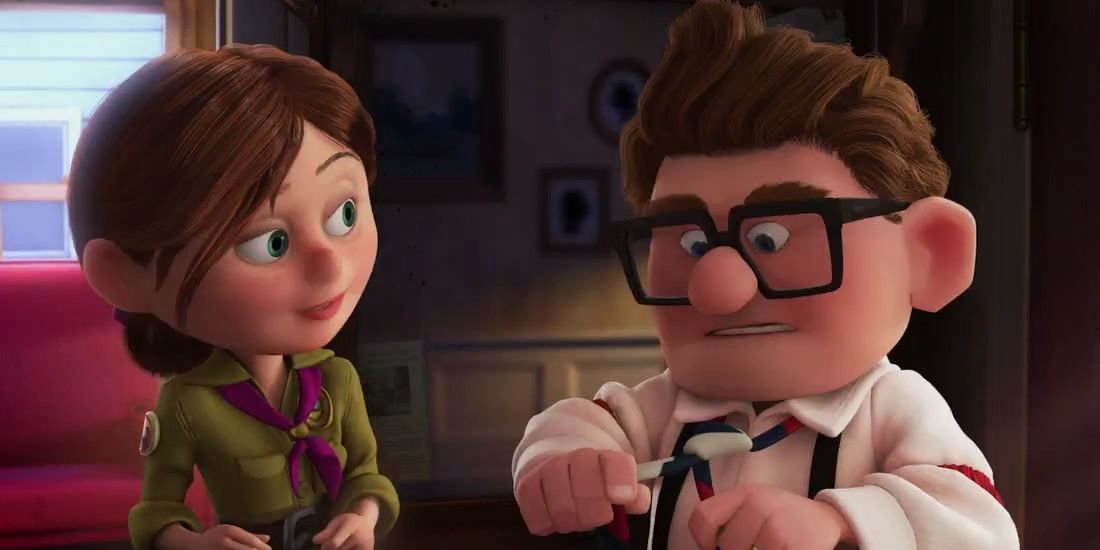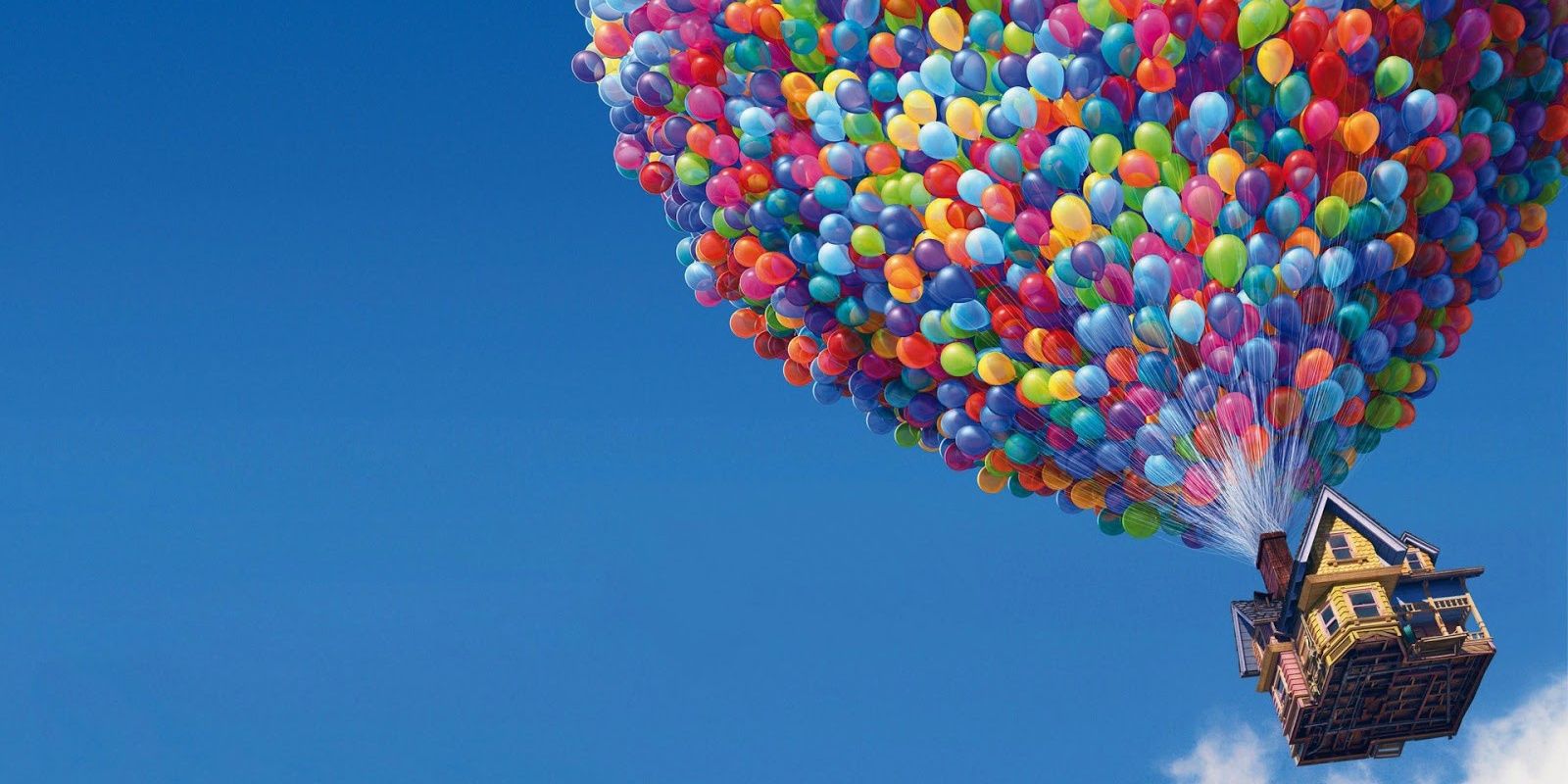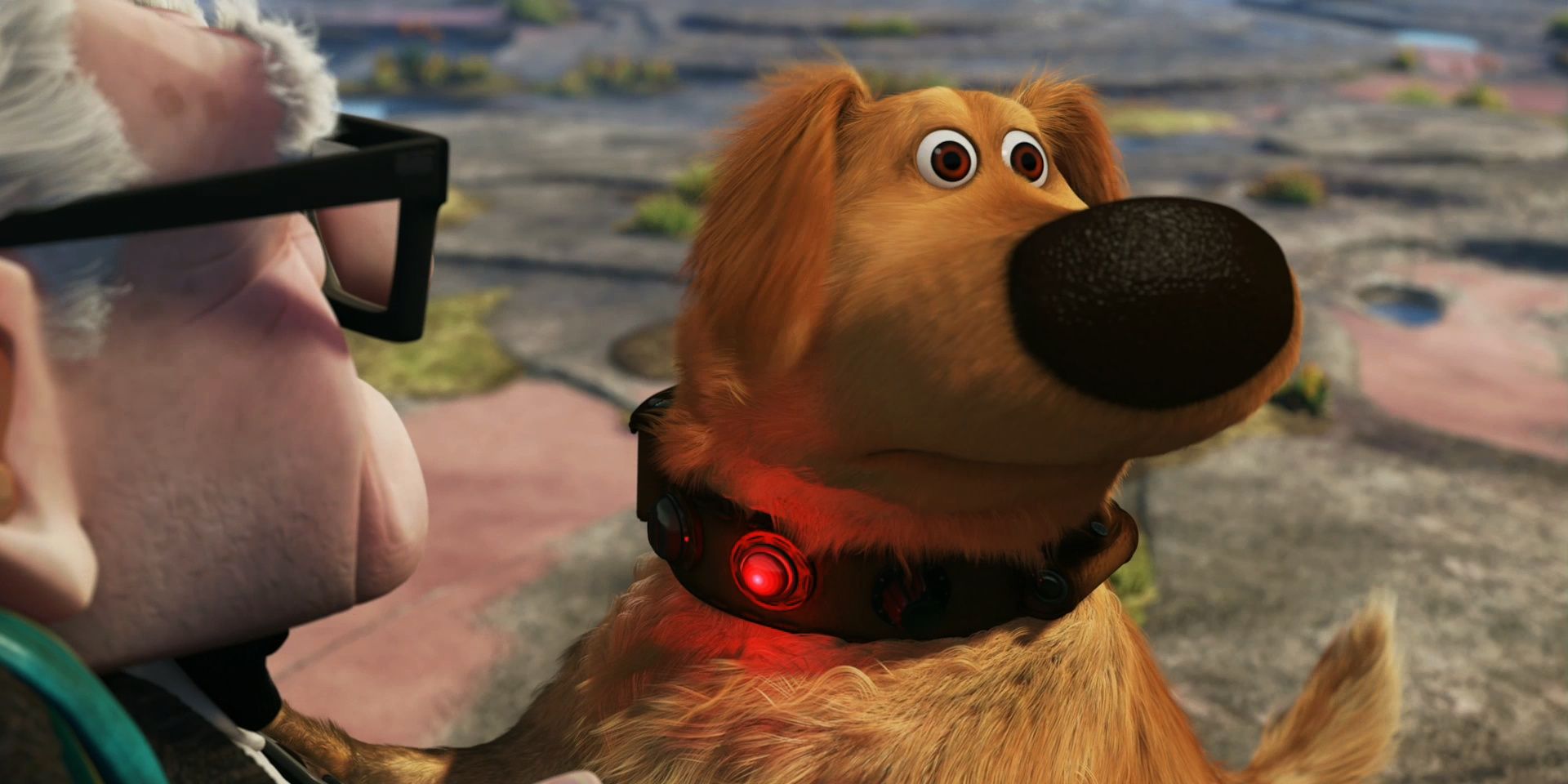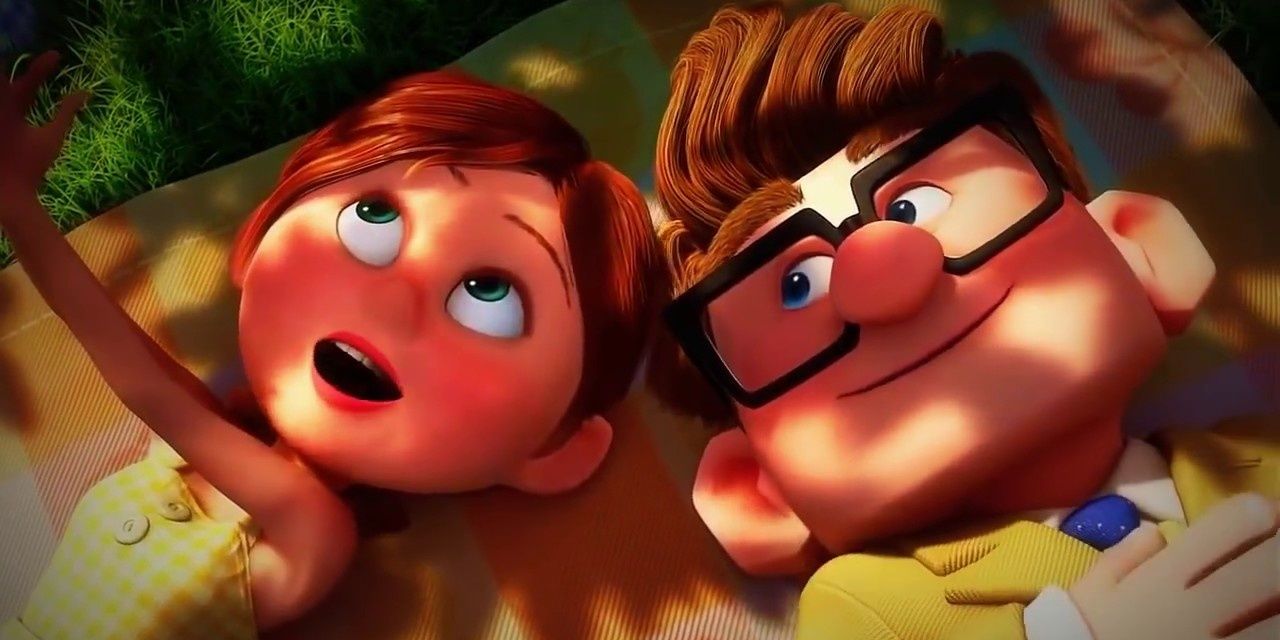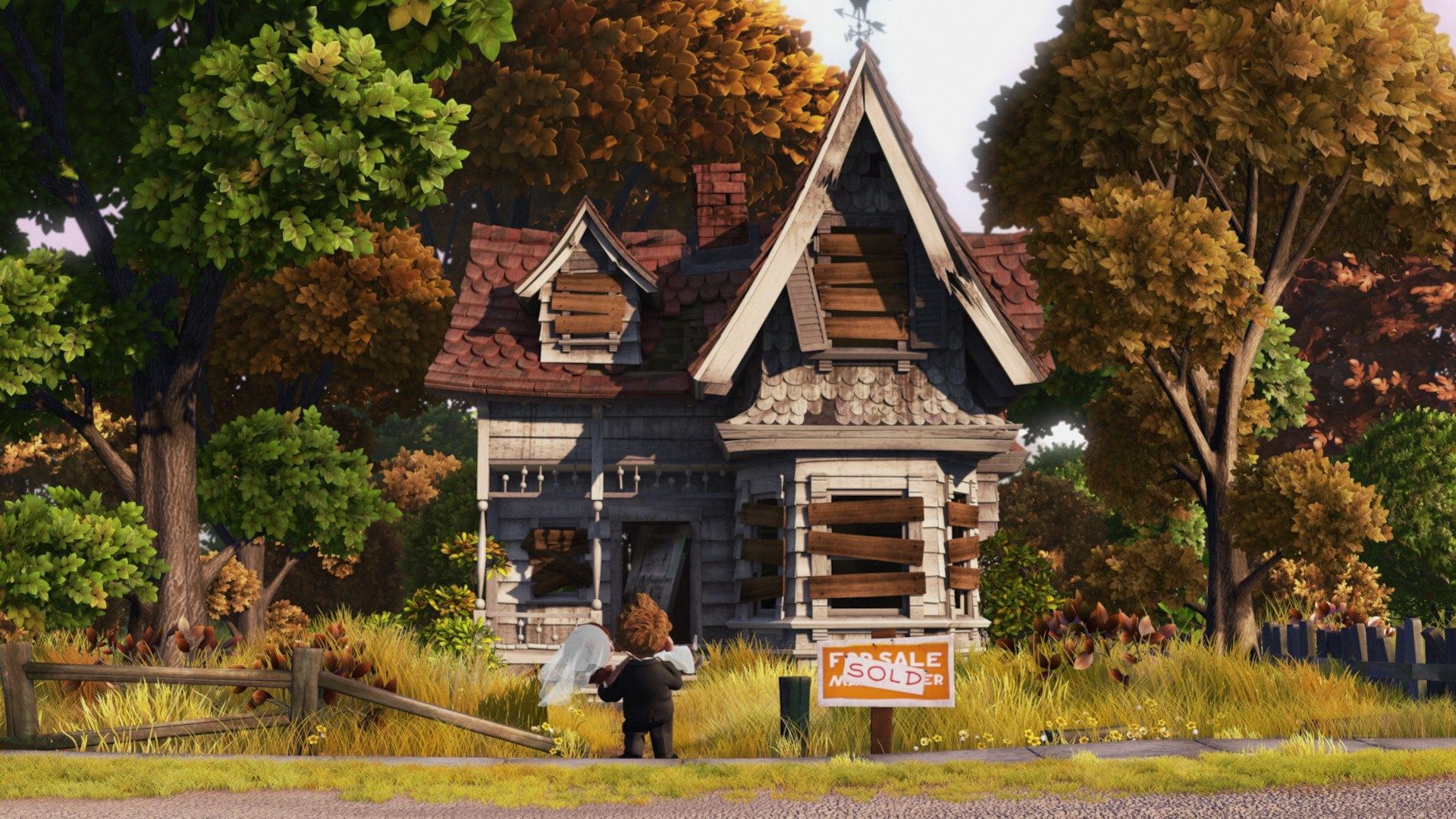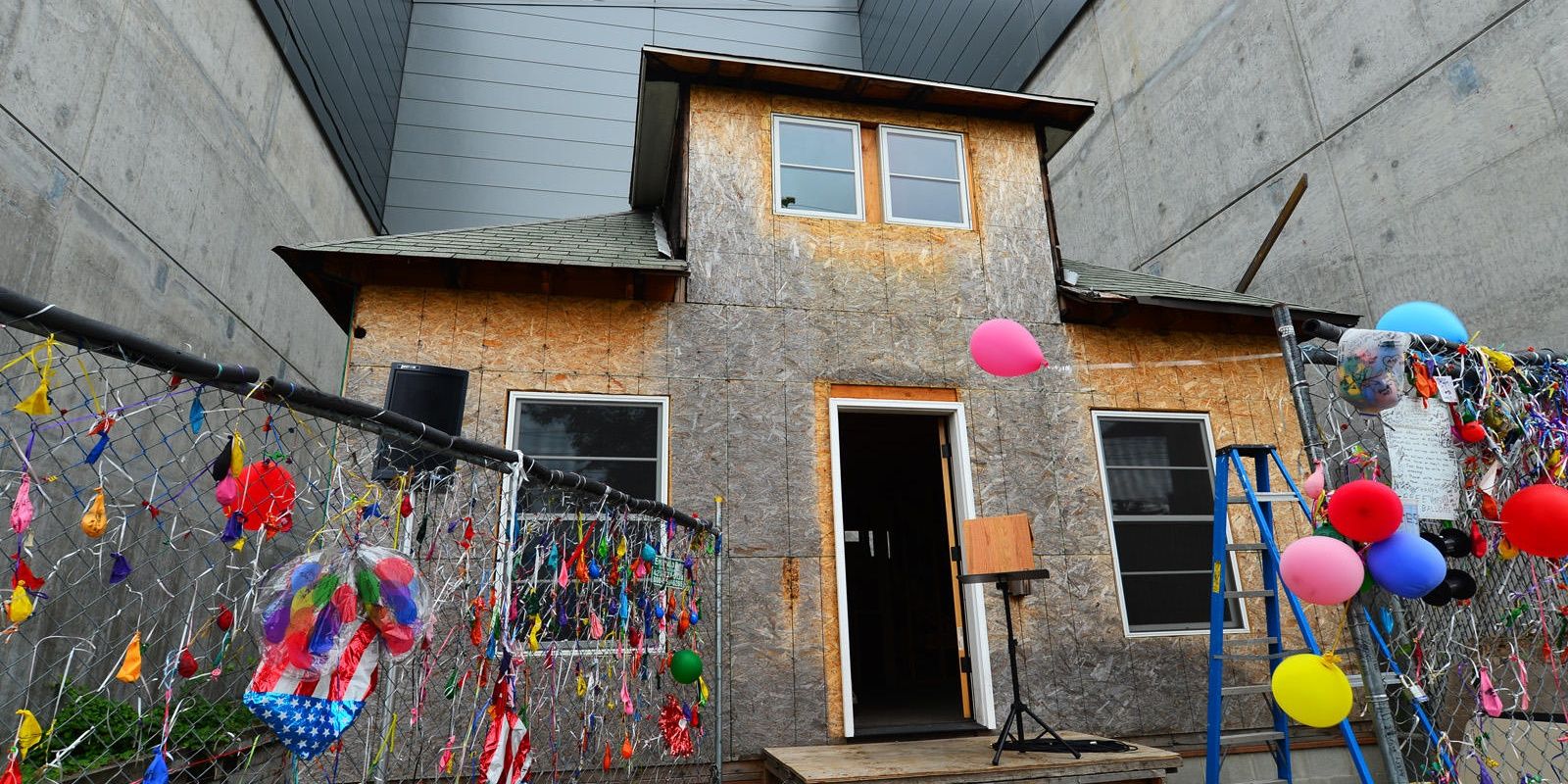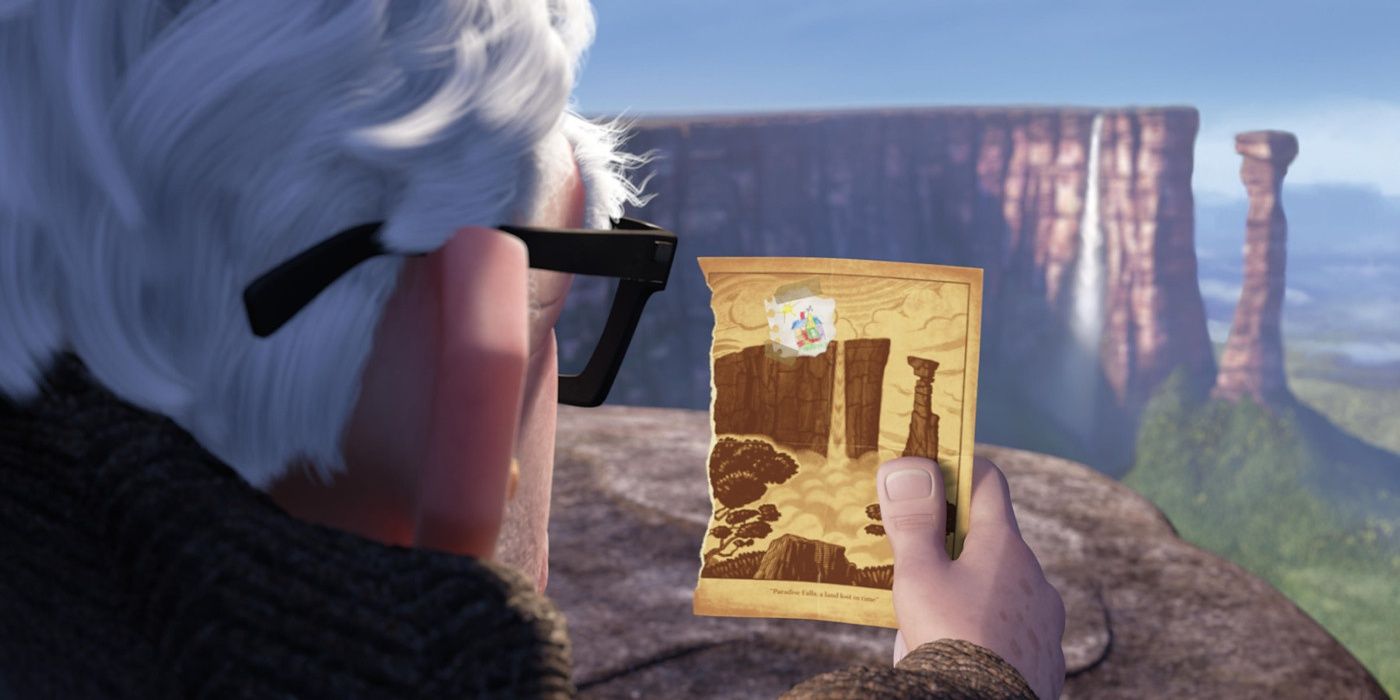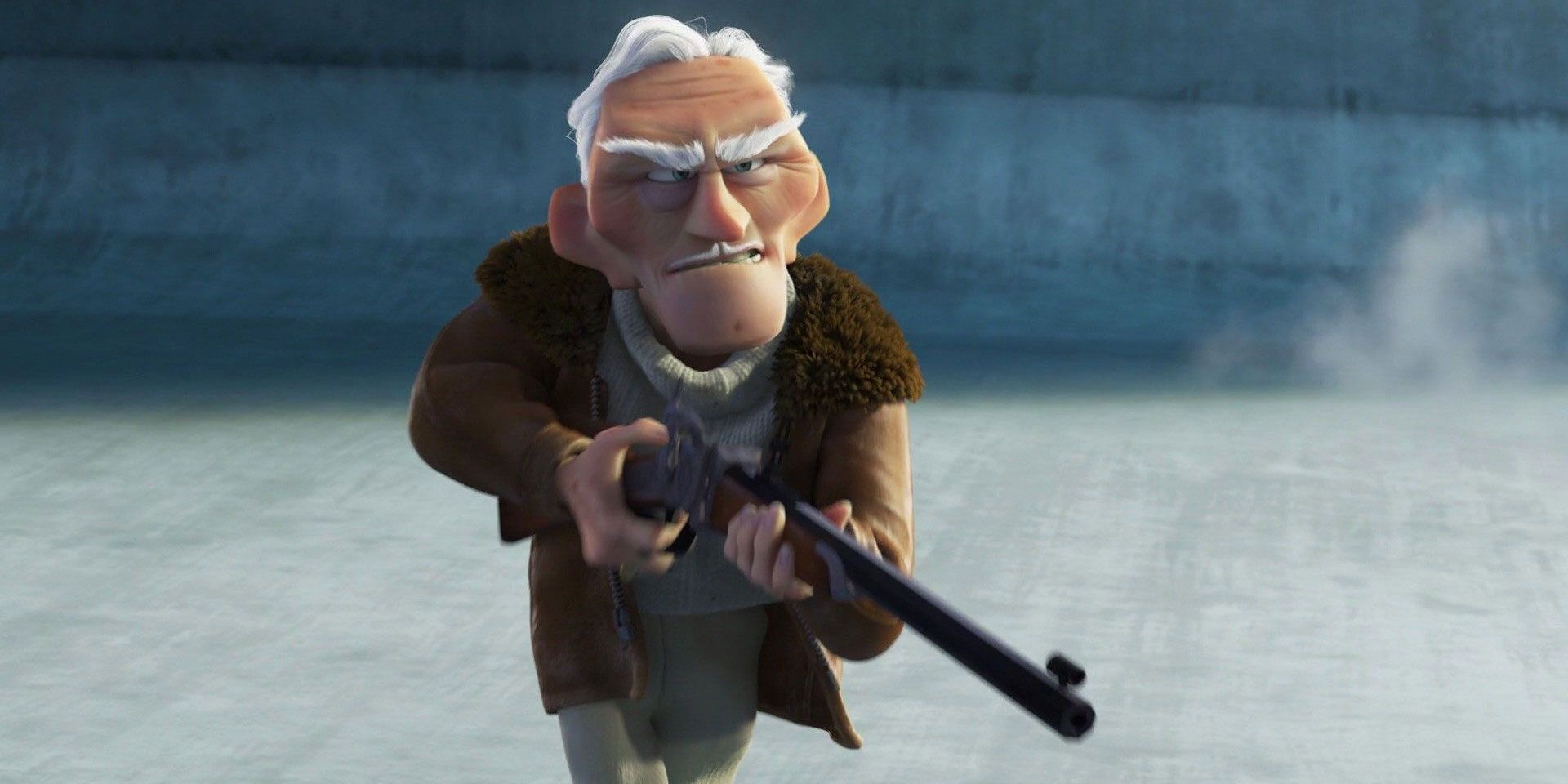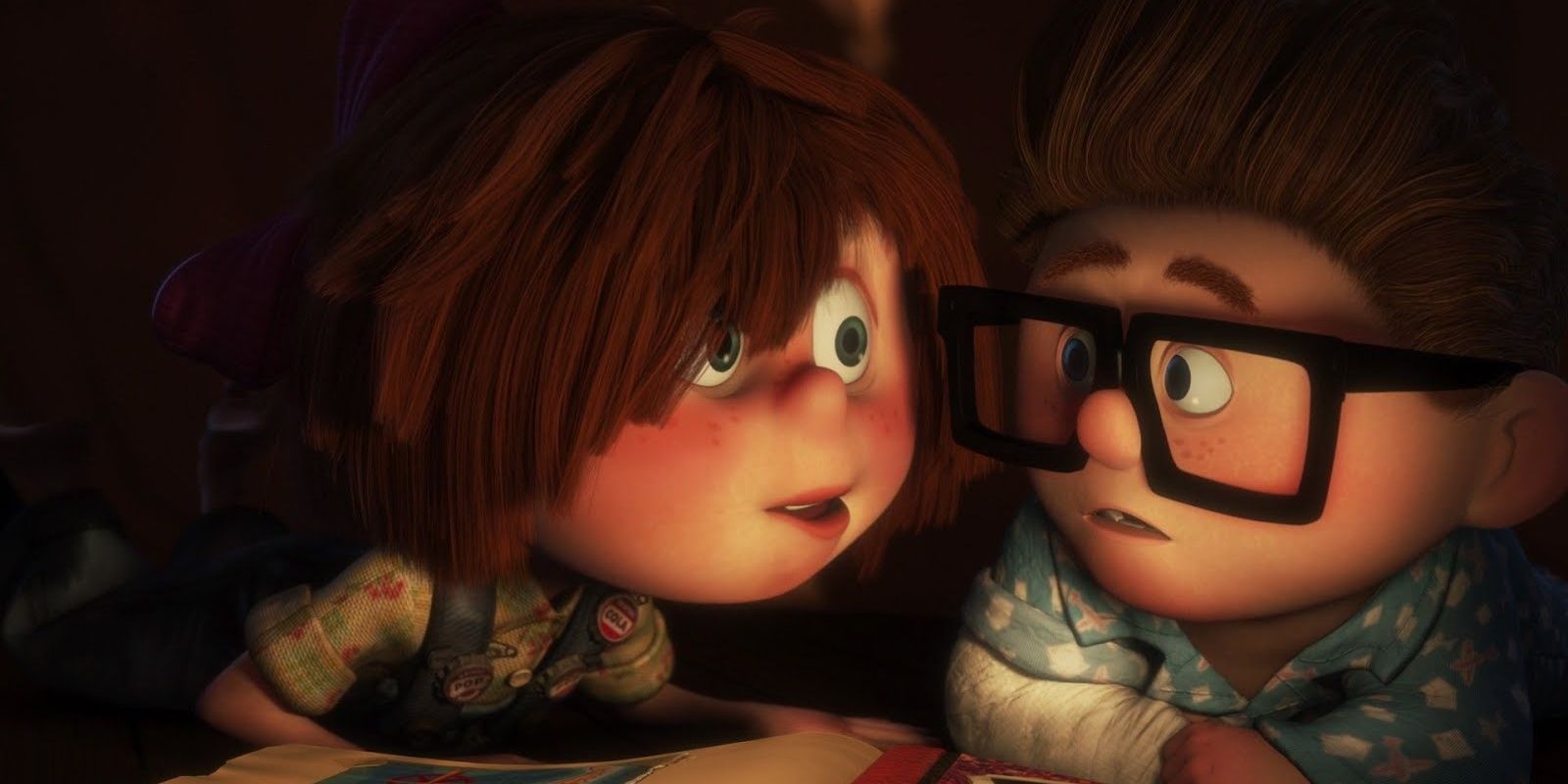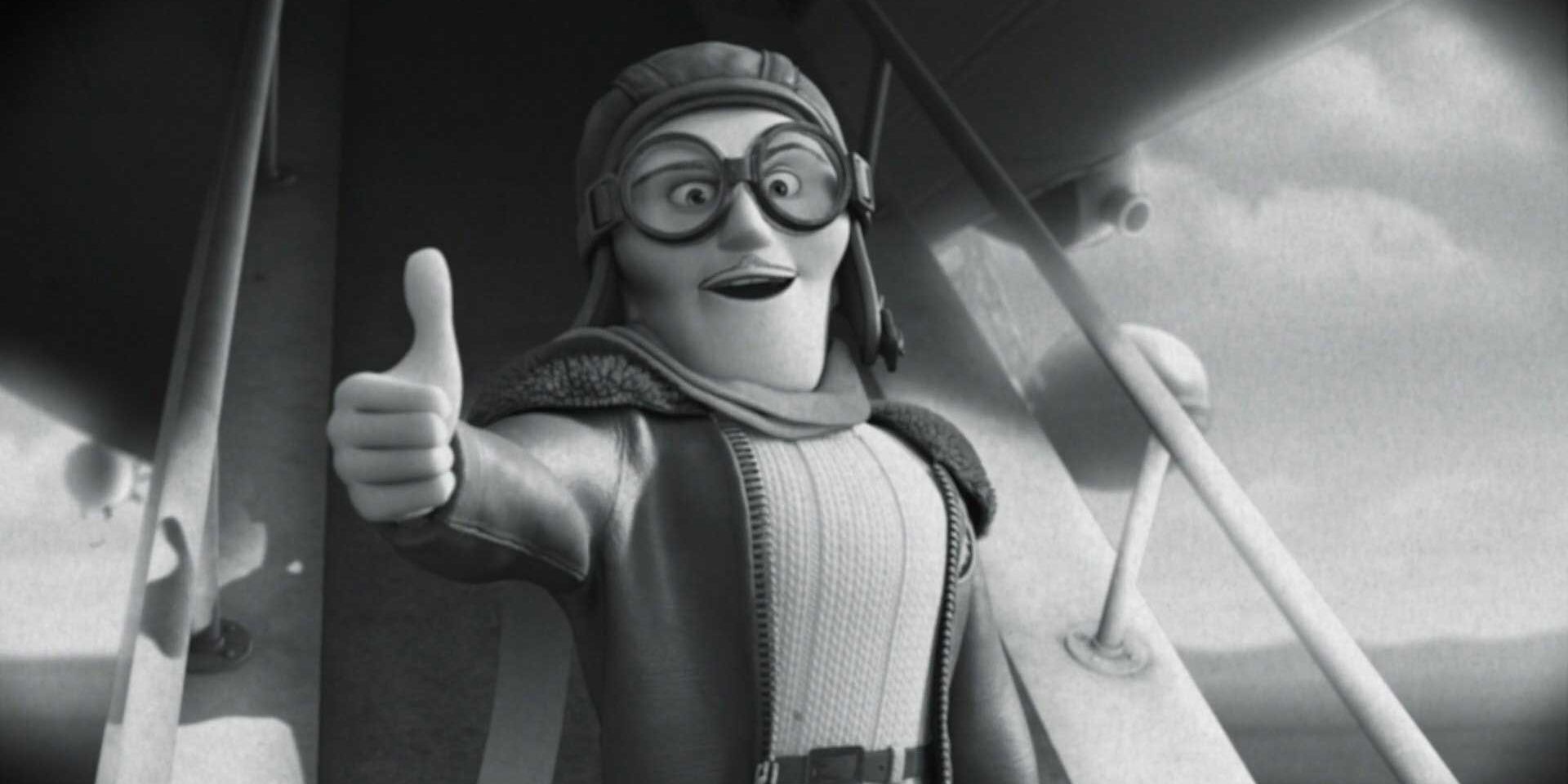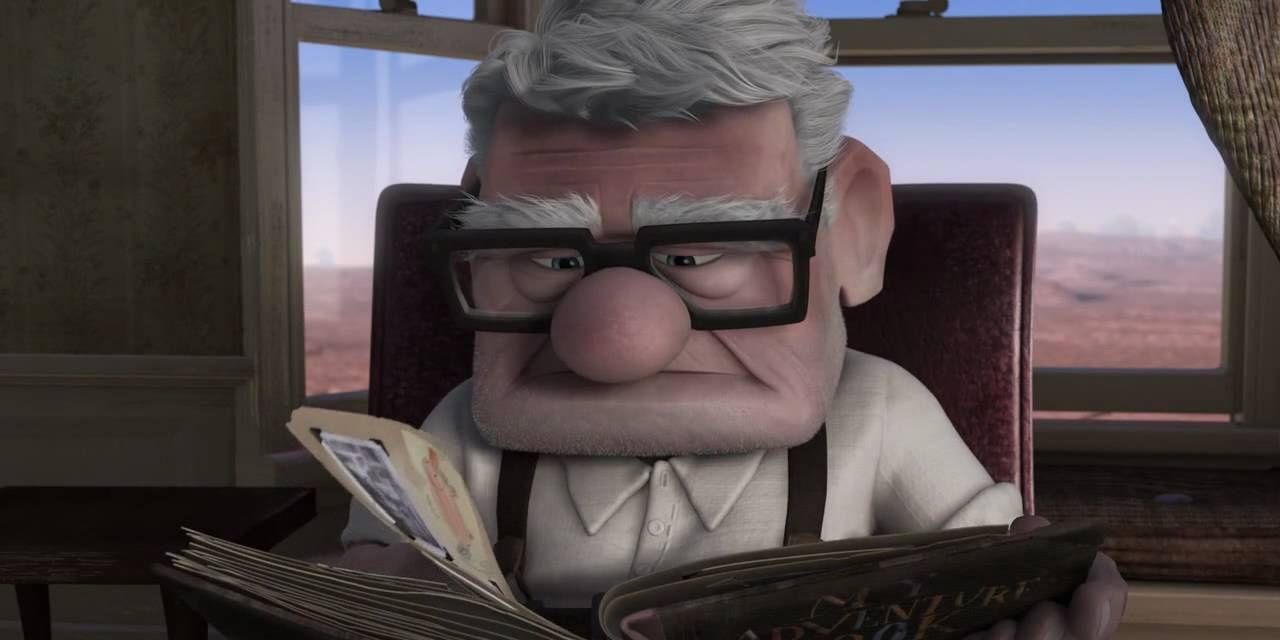When Disney-Pixar Studios released Up in 2009, the world was brought to tears by the movie's opening romance story and Carl Fredricksen's subsequent emotional transformation on his journey to Paradise Falls. Accompanied by an eccentric cast of characters, including a young boy named Russell, a talking dog named Dug and a giant bird named Kevin, 78-year-old Carl sets off to the wild plains of South America in order to fulfil his promise to his wife Ellie, who passed away many years before.
By making the protagonist a senior citizen, the producers allowed for a wealth of poignant narrative moments in relation to Carl's past and his relationship to it. Here, we look at 15 things from the process of creating Up that make the charming comedy-adventure movie even sadder than it was when it first graced cinema screens worldwide.
15 Carl's Face Is Shaped Like A Square Because He Was Boxed-Off From The World
According to the official Pixar website, when creating the characters, the filmmakers took on the idea of boiling Carl, Russell, and Ellie's appearances down to physical shapes on the page. Carl's shape is square to demonstrate that he was resistant to change and boxed off from his external surroundings, while Russell and Ellie are more circular to show that they're full of life.
14 Up Is The First Disney Full-Length Animated Feature To Hint At Divorce
Through a couple of vague lines such as 'Phyllis isn't my mom', Russell appears to be the first Disney character to hint at the concept of divorce as a reason for his being raised by a single-parent. Other Disney movies prefer to use the idea of single-parents being widowed.
13 The Writers Took Inspiration From An Old Folks' Home To Create Carl
Docter and other crew members also took their research to the field by posing as musicians in an old folks' home. They played jazz tunes to elderly people and at the same time managed to observe them enough in order to create the grouchy old demeanour crucial to Carl's character.
12 The 'Married Life' Storyboard Brought The Crew To Tears
The IMDB website reveals that the Married Life sequence brought the crew to tears before it had even materialised in animation form. Imagine their reactions once the movie was finally completed!
11 The Snapshots Of Carl And Ellie's Lives Were Based On Real People
Taking their sources from the internet, the filmmakers apparently ordered a bunch of random home movies made by strangers and watched their lives progress onscreen for inspiration. Giacchino even got ahold of some from eBay, according to director Pete Docter's interview with the Los Angeles Times.
10 A Popular Fan Theory Reveals That Carl's Travels Might Be His Journey To The Afterlife
A favourite theory within the Pixar fandom community fleshes out the idea of Carl's travels with his balloons as his journey towards the afterlife. As if the movie storyline itself wasn't sad enough already!
9 Dug's Heartfelt Line Was Quoted From A Small Child
For obvious reasons, Dug quickly became a fan favorite. The talking dog's famous line, "I have just met you, and I love you" was quoted from a child that co-director Bob Peterson met during his time as a camp counsellor in the 1980s.
8 The 'Married Life' Sequence Initially Showed Carl And Ellie Finishing Each Other's Sentences
As if the Married Life sequence wasn't heart-wrenching enough already, mentalfloss.com reveals that the initial draft of the scene had Carl and Ellie's characters finishing each other's sentences. This would've portrayed how in sync they were with each other and rendered Carl's isolation in old age even more heartbreaking, but the producers eventually opted for a lack of dialogue in the sequence.
7 The Abandoned House Where Carl And Ellie First Met Became Their Home After Marriage
If you didn't make the connection, the setting of the abandoned house at the beginning of the movie where Carl and Ellie first meet also becomes their eventual lifelong home. It therefore functions as a mark of the couple's undying loyalty and commitment.
6 The House Is Based On The Story Of Edith Macefield Who Refused To Sell Her Home To Building Developers
The animated house itself is modelled from Edith Macefield's house in the Seattle suburb of Ballard, Washington. Macefield, according to seattletimes.com, was a real estate holdout who in 2006, fought building developers and refused to sell her house to make way for any commercial development programs. Her obstinate refusal to give up her rights seem to reflect Carl's stubborn nature.
5 The Isolated Mountains Were Supposed To Represent Carl's Loneliness
The tabletop mountains of South America were chosen to represent Carl's old and desolate nature. They also provide rugged, beautiful visuals for the movie and allows the diverse characters to bond within an isolated, silent landscape.
4 The Villain Is Named After An Executive Who Stole Walt Disney's Production Rights
The villain of the movie Charles Muntz, is actually named after a Universal Pictures executive Charles Mintz, who had a controversial history with Walt Disney. In 1928, Mintz stole Disney's production rights to his popular cartoon series, Oswald the Lucky Rabbit.
3 Ellie Is Voiced By The Director's Own Daughter
A personal touch was added to the film by allowing Pete Docter's own daughter, Elizabeth, to voice the character of Ellie. She was also the inspiration for Ellie's personality, with the two of them sharing a spirited, spunky attitude to life.
2 The Villain Represents What Carl Could've Turned Out To Be If He Didn't Open Up
Muntz, according to Pete Docter, is illustrated as Carl's dark double and the example of what could've been if he had stuck to his boxed-off, pessimistic ways. In this way, the villain symbolises Carl's old idea of adventure and his inability to connect with his present surroundings.
1 The Score Was Written As A Nostalgic Music Box For Carl
The score for the movie, compiled by Oscar-winning composer Michael Giacchino, is deliberately old-fashioned in order to reflect Carl's childhood and the idea of him still being stuck in the past. It encapsulates a lot of swing tunes and slowly moves into bold, climatic adventure music.

